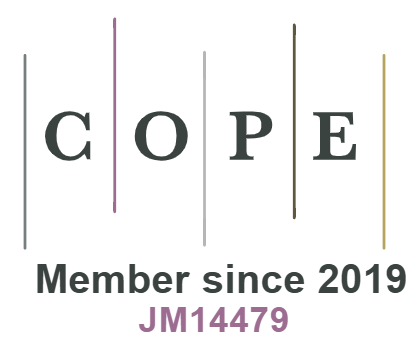Difficulties concerning quantitative research in contemporary migration studies. Selected issues
DOI:
https://doi.org/10.18778/0208-600X.53.02Keywords:
quantitative research, migrations, immigration, emigration, databasesAbstract
The purpose of this article is to show those dealing with issues of contemporary migration studies, what are the basic difficulties arising from quantitative research in this field. Issues concerning definitions are tended to with the most focus. These are best described as multilayered, but aside from problems with deciding the meaning of a given concept, there is a number of influences that come into play – political (teleological), legal, practical, process-wise and temporal. For those reasons, all of the above serve as a point of departure for comments made in regard to measurements, interpretations, access, controversies, and inconsistent and low-quality information found in databases. As a result, data dispersion and fragmentation becomes a nuisance, which significantly hinders the ability to carry out comparative research, both between countries as well as different categories of citizens of a given country. Also discussed is a token data-mining system on the issues of foreign migration. Closing arguments touch on a several chosen aspects of an actual research process, relevant from the standpoint of contemporary migration studies. This reconstruction refers to both Polish and European contexts.
References
Barcz J., Górka M., Wyrozumska A. (2012), Instytucje i prawo Unii Europejskiej. Podręcznik dla kierunków prawa, zarządzania i administracji , LexisNexis Polska, Warszawa.
Google Scholar
Castles S., Miller M. J. (2011), Migracje we współczesnym świecie, Wydawnictwo Naukowe PWN, Warszawa.
Google Scholar
Chatty D., Marfleet P. (2013), Conceptual problems in forced migration, „Refugee Survey Quarterly”, Vol. 32, No. 2, s. 1–13, http://rsq.oxfordjournals.org/content/32/2/1.full.pdf+html, 15.04.2015.
Google Scholar
DOI: https://doi.org/10.1093/rsq/hdt008
Dobson J., Latham A., Salt J. (2010), European Migration Network Annual Report on Asylum and Migration Statistics for the UK 2007, Home Office UK Border Agency, London, http://www.geog.ucl.ac.uk/research/transnational-spaces/migration-research-unit/publica-tions/pdfs/27._UNITED_KINGDOM_Annual_Report_on_Asylum_and_ Migration_Statis-tics_2007_FINAL_Version_March2010.pdf, 15.04.2015.
Google Scholar
Dzięglewski M. (2012), Współczesne studia migracyjne jako wielowymiarowa układanka, „Annales Universitatis Paedagogicae Cracoviensis. Studia Socologica IV”, t. 2, s. 7–13, http:// www.ifis.up.krakow.pl/studia_sociologica/images/SS_IV_2/Dzieglew-ski1.pdf, 15.04.2015.
Google Scholar
Edwards S. (2008), Computational Tools in Predicting and Assessing Forced Migration, „Journal of Refugee Studies”, Vol. 21, No. 3, s. 347–359, http://jrs.oxfordjournals.org/content/21/3/347. full.pdf+html, 15.04.2015.
Google Scholar
DOI: https://doi.org/10.1093/jrs/fen024
European Migration Network (2014), Asylum and Migration Glossary 3.0, European Commission, http://ec.europa.eu/dgs/home-affairs/what-we-do/networks/european_migration_network/ docs/emn-glossary-en-version.pdf, 15.04.2015.
Google Scholar
Eurostat (2015), Concepts and Definitions. Eurostat’s Concepts and Definitions Database, http:// ec.europa.eu/eurostat/ramon/nomenclatures/index.cfm?TargetUrl=LST_NOM_DTL_GLOS-SARY&StrNom=CODED2&StrLanguageCode=EN, 11.04.2015.
Google Scholar
Feller E. (2005), Refugees are not migrants, „Refugee Survey Quarterly”, Vol. 24, No. 4, s. 27–35, http://rsq.oxfordjournals.org/content/24/4/27.full.pdf+html, 15.04.2015.
Google Scholar
DOI: https://doi.org/10.1093/rsq/hdi077
Główny Urząd Statystyczny (2011), Departament Badań Demograficznych – Wydział Analiz i Badań Migracji, System badań migracji zagranicznych w Polsce, http://stat.gov.pl/obszary-tematyczne/ludnosc/migracje-ludnosci/system-badan-migracji-zagranicznych-w-polsce,7,1.html, 11.04.2015.
Google Scholar
Główny Urząd Statystyczny (2015), Definicje pojęć, http://stat.gov.pl/metainformacje/slownik-po¬jec/definicje-pojec, 11.04.2015.
Google Scholar
Henning S., Hovy B. (2011), Data Sets on International Migration, „International Migration Review”, Vol. 45, No. 4, s. 980–985, http://onlinelibrary.wiley.com/doi/10.1111/j.1747-7379. 2011.00874_2.x/full, 15.04.2015.
Google Scholar
DOI: https://doi.org/10.1111/j.1747-7379.2011.00874_2.x
Jaźwińska E. (2000), Metody ilościowe w badaniach nad migracjami międzynarodowymi, Instytut Studiów Społecznych Uniwersytetu Warszawskiego, Warszawa, http://www.migracje. uw.edu.pl/download/publikacja/248, 15.04.2015.
Google Scholar
Kaczmarczyk P. (2002), Migracje o charakterze cyrkulacyjnym a inne formy mobilności terytorialnej w świetle doświadczeń badawczych, Instytut Studiów Społecznych Uniwersytetu Warszawskiego, Warszawa, http://www.migracje.uw.edu.pl/publ/579, 15.04.2015.
Google Scholar
Kaczmarczyk P. (red.) (2014), Recent Trends in International Migration in Poland. The 2012 SOPEMI Report, Ośrodek Badań nad Migracjami, Warszawa, http://www.migracje.uw.edu.pl/ publ/2373, 15.04.2015.
Google Scholar
King R. (2012), Theories and Typologies of Migration: An Overview and a Primer, Malmö Institute for Studies of Migration, Diversity and Welfare, Malmö, https://www.mah.se/upload/ Forskningscentrum/MIM/WB/WB%203.12.pdf, 15.04.2015.
Google Scholar
Kraler A., Reichel D. (2011), Measuring Irregular Migration and Population Flows – What Available Data Can Tell, „International Migration”, Vol. 49, No. 5, s. 97–128, http://onlinelibrary.wiley.com/doi/10.1111/j.1468-2435.2011.00699.x/full, 15.04.2015.
Google Scholar
DOI: https://doi.org/10.1111/j.1468-2435.2011.00699.x
Kupiszewska D. (2009), Data Collection Systems and Practices in Poland Relevant to Research on Migration and Integration, Central European Forum for Migration and Population Research, Warszawa, http://www.cefmr.pan.pl/docs/cefmr_wp_2009-03.pdf, 15.04.2015.
Google Scholar
Kupiszewski M. (2004), Metodologiczne problemy prognozowania migracji zagranicznych, „Zeszyty Naukowe”, t. 15, Kolegium Gospodarki Światowej Szkoły Głównej Handlowej, Warszawa, http://yadda.icm.edu.pl/yadda/element/bwmeta1.element.dl-catalog-0e0bc6b2-9ce-8-4b9e-b078-25fc96a13e55/c/Zeszyty_Naukowe_SGH-2004-9-15-21-34.pdf, 15.04.2015.
Google Scholar
Perruchoud R., Redpath-Cross J. (eds.) (2011), Glossary on Migration, 2nd ed., IOM International Organization for Migration, Geneva, http://www.epim.info/wp-content/up-loads/2011/01/iom.pdf, 15.04.2015.
Google Scholar
United Nations (UN) (1998), Department of Economic and Social Affairs, Statistics Division, Re¬commendations on Statistics of International Migration, Revision 1, United Nations, New York, http://unstats.un.org/unsd/publication/SeriesM/seriesm_58rev1e. pdf, 15.04.2015.
Google Scholar
Vargas-Silva C. (2012), EU Migrants in other EU Countries: An Analysis of Bilateral Migrant Stocks, The Migration Observatory at the University of Oxford, http://www.migrationobserva¬tory.ox.ac.uk/sites/files/ migobs/EU%20migrant%20stocks.pdf, 15.04.2015.
Google Scholar
Vollmer B. (2011), Irregular Migration in the UK: Definitions, Pathways and Scale, The Migration Observatory at the University of Oxford, http://www.migrationobservatory.ox.ac.uk/sites/ files/migobs/Briefing%20-%20Irregular%20Migration_0.pdf, 15.04.2015.
Google Scholar
Voutira E., Doná G. (2007), Refugee Research Methodologies: Consolidation and Transformation of a Field, „Journal of Refugee Studies”, Vol. 20, No. 2, s. 163–171, http://jrs.oxfordjournals.org/ content/20/2/163.full.pdf+html, 15.04.2015.
Google Scholar
DOI: https://doi.org/10.1093/jrs/fem017
Downloads
Published
How to Cite
Issue
Section
License
Copyright (c) 2015 © Copyright by Authors, Łódź © Copyright for this edition by Uniwersytet Łódzki, Łódź 2015

This work is licensed under a Creative Commons Attribution-NonCommercial-NoDerivatives 4.0 International License.









